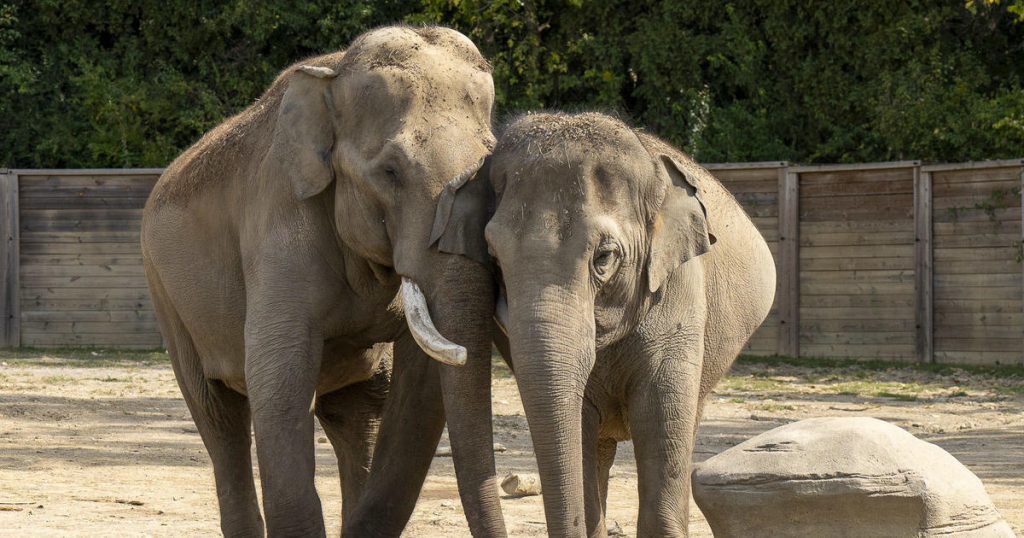The Columbus Zoo and Aquarium in Ohio recently announced that two of their Asian elephants, Phoebe and Sunny, are pregnant at the same time, marking a rare occurrence in the zoo’s history. This news is seen as a glimmer of hope for Asian elephant conservation, as it provides the opportunity to care for a multigenerational herd, which is beneficial for the elephants’ social dynamics. Adam Felts, the senior curator of animal care and director of animal wellbeing at the zoo, expressed excitement about the upcoming births, stating that they will help ensure a genetically diverse and healthy population of elephants in North American zoos. Phoebe, who is already a mother of a 3-year-old calf named Frankie, is expecting her second calf, while this will be Sunny’s first pregnancy. The gestation period for elephants is 22 months, and both calves were fathered by Sabu, an elephant bull temporarily staying in Columbus as part of a species survival plan.
In the grand scheme of things, the Asian elephant population is facing challenges due to factors such as habitat loss, poaching, and human-wildlife conflicts. The International Elephant Foundation reports that there are only roughly 40,000 to 50,000 Asian elephants left in the world. Recently, Namibia announced a plan to cull wildlife, including 83 elephants, in response to a severe drought that has increased human-wildlife conflicts. It is clear that conservation efforts are crucial to the survival of these majestic creatures, and initiatives like the one at Columbus Zoo play a vital role in ensuring the health and diversity of elephant populations in captivity. The zoo’s elephant herd currently consists of five elephants, including Phoebe, Sunny, and Sabu.
The importance of maintaining a genetically diverse and healthy population of elephants in captivity cannot be overstated, as it contributes to the overall wellbeing of the species. Inbreeding and genetic anomalies can pose serious risks to the long-term survival of elephants, making initiatives like the breeding program at Columbus Zoo essential for conservation efforts. By carefully managing the reproduction of elephants in zoos, researchers and caretakers can help prevent genetic problems and ensure that future generations of elephants are strong and resilient. This approach aligns with the goals of various conservation organizations and foundations dedicated to protecting endangered species like the Asian elephant.
Elephants are highly intelligent and social animals that communicate in complex ways, both vocally and non-verbally. Their ability to vocalize and use body language to convey messages within their herds is a fascinating aspect of their behavior. Understanding how elephants communicate with each other can provide valuable insights into their social structures and relationships. Researchers have long been fascinated by the intricate language of elephants and continue to study their communication patterns to gain a deeper understanding of these magnificent creatures. By unraveling the secrets of how elephants talk, scientists hope to improve conservation efforts and enhance the welfare of captive elephants through better communication and understanding.
Overall, the news of the simultaneous pregnancies of Phoebe and Sunny at Columbus Zoo sheds light on the importance of captive breeding programs for endangered species like the Asian elephant. These initiatives play a crucial role in conservation efforts and help to ensure the survival of species facing threats in the wild. The successful reproduction of elephants in zoos not only contributes to genetic diversity but also raises awareness about the plight of endangered species and the need for conservation measures. As researchers and caretakers work together to protect and preserve elephants, they provide hope for a future where these majestic animals can thrive in their natural habitats and in human care. Through initiatives like the one at Columbus Zoo, we can learn more about elephants’ behavior, communication, and social dynamics, ultimately leading to better conservation outcomes for these iconic animals.


